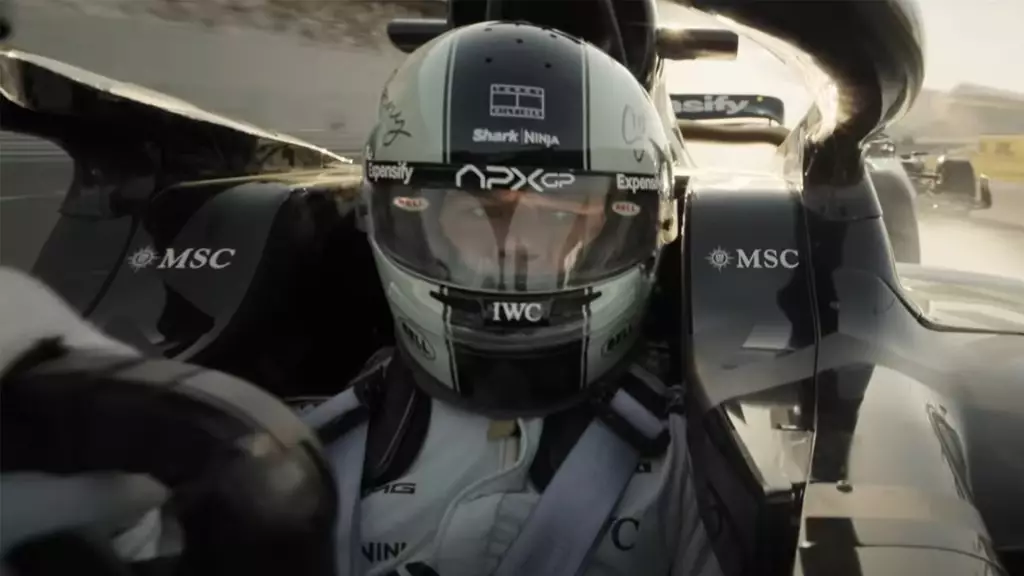In an era where theatrical audiences are notoriously elusive—thanks to streaming competition, high ticket prices, and shifting consumer habits—it’s refreshing to witness a commercially and culturally significant success like Apple’s “F1.” The film’s $55 million-plus opening weekend at nearly 3,700 theaters isn’t just a one-off hit; it’s a game-changer for how mid-to-high budget films from non-traditional studios can break out in today’s market. Directed by Joseph Kosinski and produced by Jerry Bruckheimer, “F1” not only outperformed expectations but crushed the previous Apple Original Movie records by a wide margin. As someone who leans center-right and values individual effort and market-driven success, this film’s ascent underscores the power of quality, marketing, and smart collaboration—even outside legacy Hollywood studios.
F1’s Smart Blend of Hollywood Glamour and Global Appeal
The film’s appeal stems from more than just star power—Brad Pitt’s leading man status helps, but “F1” taps into an international sporting passion seldom exploited at scale in Hollywood blockbusters. Formula One racing’s global fan base offers a built-in audience, and this particular project smartly leverages that international enthusiasm alongside strong domestic interest. This nuanced approach contrasts with the often insular focus of American cinema, sparking both cultural exchange and robust ticket sales worldwide. To its credit, this film respects that broad viewership. It also challenges the tired norm that only superhero movies or franchises with decades-old fanbases can generate Big Box Office numbers.
Marketing Power Meets Audience Insight
Behind “F1” is a meticulously engineered marketing machine. Warner Bros., which partnered with Apple, clearly went all-in on this release, driving visibility through multiple digital platforms including TikTok, YouTube, Instagram, and Twitter. The staggering reach of over 845 million engagements, a number on par with top-tier franchises like “Mission: Impossible,” is no accident. It reflects real, strategic nimbleness in engaging the coveted 13-24 demographic—an age group notoriously hard to capture these days. That nearly one-third of the audience falls within this younger bracket suggests the campaign didn’t just target existing F1 enthusiasts but tapped into wider cultural currents, deftly blending sport, spectacle, and star appeal.
Why Apple’s Hollywood Foray Matters Beyond the Numbers
For years, Apple’s theatrical attempts—whether the underwhelming “Fly Me to the Moon” or the obscure “Wolfs”—were met with indifference. “F1” changes that narrative dramatically. It signals that Silicon Valley giants can succeed not by simply throwing resources at projects, but by respecting the distinct nature of the big screen experience. This moment also exposes the limitations of purely streaming-first thinking and proves theatrical distribution still has a vital place—even for a tech company. This is not just a win for Apple but for a market economy based on meritocratic creative competition instead of heavy-handed state cultural interventions or ideologically driven content quotas.
The Middle Ground Between Blockbusters and Art House Cinema
“F1” neatly occupies a sweet spot too often neglected: a solidly constructed, crowd-pleasing event film that isn’t a mindless popcorn flick nor an overlong prestige drama. Unlike the sluggish 3+ hour “Killers of the Flower Moon,” which opened to just $23 million domestically, “F1” respects audience attention spans while delivering spectacle and storytelling substance. For center-right audiences who appreciate both cultural sophistication and economic prudence, this balance is a welcome antidote to Hollywood’s ever-worsening pendulum swings between formulaic franchise fatigue and pretentious art wanks.
The Risk of Overhyping Missteps: The M3GAN 2.0 Cautionary Tale
Apple isn’t the only studio releasing films this summer—and not all are hitting their marks. Universal’s “M3GAN 2.0” opened far below expectations around $10 million despite the original’s surprising success. The horror genre fatigue combined with a gimmicky sequel formula signals that even modestly budgeted films can falter when lacking authentic broad interest or creative freshness. This serves as a reminder that savvy marketing and genuine audience connection cannot be replaced by hype or sequelitis. “F1” shines by contrast because it delivers originality wrapped in proven entertainment values.
A Center-Right Celebration of Market-Driven Success and Quality
What this weekend’s box office highlights is simple: a market-oriented, merit-based triumph for smart filmmaking and distribution strategy. “F1” shows that profitability and cultural resonance are not mutually exclusive, that creative excellence and commercial viability can co-exist without ideological compromise. It reminds us that audiences—especially younger demographics—will reward films that respect their intelligence and interests rather than pandering to lowest-common-denominator trends or political messaging. For those wary of cultural oversaturation with progressive ideological agendas, “F1” offers a breath of fresh air: a patriotic success story blending American filmmaking know-how with global enthusiasm, driven by quality and genuine storytelling rather than woke posturing.
In this broken entertainment landscape, Apple’s “F1” stands as a clear example of what’s possible when risk, professionalism, and market forces align. It’s proof that the old studio system’s era of dominance might be confronting fresh competition—and that the future of center-right-friendly entertainment could well emerge from new players in the field who want to blend tradition with innovation.

